Andrew Beng Jin Teoh
Palmprint De-Identification Using Diffusion Model for High-Quality and Diverse Synthesis
Apr 11, 2025



Abstract:Palmprint recognition techniques have advanced significantly in recent years, enabling reliable recognition even when palmprints are captured in uncontrolled or challenging environments. However, this strength also introduces new risks, as publicly available palmprint images can be misused by adversaries for malicious activities. Despite this growing concern, research on methods to obscure or anonymize palmprints remains largely unexplored. Thus, it is essential to develop a palmprint de-identification technique capable of removing identity-revealing features while retaining the image's utility and preserving non-sensitive information. In this paper, we propose a training-free framework that utilizes pre-trained diffusion models to generate diverse, high-quality palmprint images that conceal identity features for de-identification purposes. To ensure greater stability and controllability in the synthesis process, we incorporate a semantic-guided embedding fusion alongside a prior interpolation mechanism. We further propose the de-identification ratio, a novel metric for intuitive de-identification assessment. Extensive experiments across multiple palmprint datasets and recognition methods demonstrate that our method effectively conceals identity-related traits with significant diversity across de-identified samples. The de-identified samples preserve high visual fidelity and maintain excellent usability, achieving a balance between de-identification and retaining non-identity information.
TailedCore: Few-Shot Sampling for Unsupervised Long-Tail Noisy Anomaly Detection
Apr 03, 2025



Abstract:We aim to solve unsupervised anomaly detection in a practical challenging environment where the normal dataset is both contaminated with defective regions and its product class distribution is tailed but unknown. We observe that existing models suffer from tail-versus-noise trade-off where if a model is robust against pixel noise, then its performance deteriorates on tail class samples, and vice versa. To mitigate the issue, we handle the tail class and noise samples independently. To this end, we propose TailSampler, a novel class size predictor that estimates the class cardinality of samples based on a symmetric assumption on the class-wise distribution of embedding similarities. TailSampler can be utilized to sample the tail class samples exclusively, allowing to handle them separately. Based on these facets, we build a memory-based anomaly detection model TailedCore, whose memory both well captures tail class information and is noise-robust. We extensively validate the effectiveness of TailedCore on the unsupervised long-tail noisy anomaly detection setting, and show that TailedCore outperforms the state-of-the-art in most settings.
FedPalm: A General Federated Learning Framework for Closed- and Open-Set Palmprint Verification
Mar 05, 2025



Abstract:Current deep learning (DL)-based palmprint verification models rely on centralized training with large datasets, which raises significant privacy concerns due to biometric data's sensitive and immutable nature. Federated learning~(FL), a privacy-preserving distributed learning paradigm, offers a compelling alternative by enabling collaborative model training without the need for data sharing. However, FL-based palmprint verification faces critical challenges, including data heterogeneity from diverse identities and the absence of standardized evaluation benchmarks. This paper addresses these gaps by establishing a comprehensive benchmark for FL-based palmprint verification, which explicitly defines and evaluates two practical scenarios: closed-set and open-set verification. We propose FedPalm, a unified FL framework that balances local adaptability with global generalization. Each client trains a personalized textural expert tailored to local data and collaboratively contributes to a shared global textural expert for extracting generalized features. To further enhance verification performance, we introduce a Textural Expert Interaction Module that dynamically routes textural features among experts to generate refined side textural features. Learnable parameters are employed to model relationships between original and side features, fostering cross-texture-expert interaction and improving feature discrimination. Extensive experiments validate the effectiveness of FedPalm, demonstrating robust performance across both scenarios and providing a promising foundation for advancing FL-based palmprint verification research.
Deep Learning in Palmprint Recognition-A Comprehensive Survey
Jan 02, 2025



Abstract:Palmprint recognition has emerged as a prominent biometric technology, widely applied in diverse scenarios. Traditional handcrafted methods for palmprint recognition often fall short in representation capability, as they heavily depend on researchers' prior knowledge. Deep learning (DL) has been introduced to address this limitation, leveraging its remarkable successes across various domains. While existing surveys focus narrowly on specific tasks within palmprint recognition-often grounded in traditional methodologies-there remains a significant gap in comprehensive research exploring DL-based approaches across all facets of palmprint recognition. This paper bridges that gap by thoroughly reviewing recent advancements in DL-powered palmprint recognition. The paper systematically examines progress across key tasks, including region-of-interest segmentation, feature extraction, and security/privacy-oriented challenges. Beyond highlighting these advancements, the paper identifies current challenges and uncovers promising opportunities for future research. By consolidating state-of-the-art progress, this review serves as a valuable resource for researchers, enabling them to stay abreast of cutting-edge technologies and drive innovation in palmprint recognition.
Face Reconstruction Transfer Attack as Out-of-Distribution Generalization
Jul 02, 2024
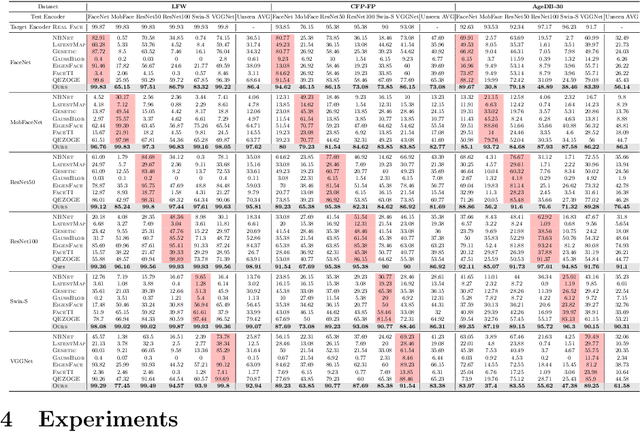

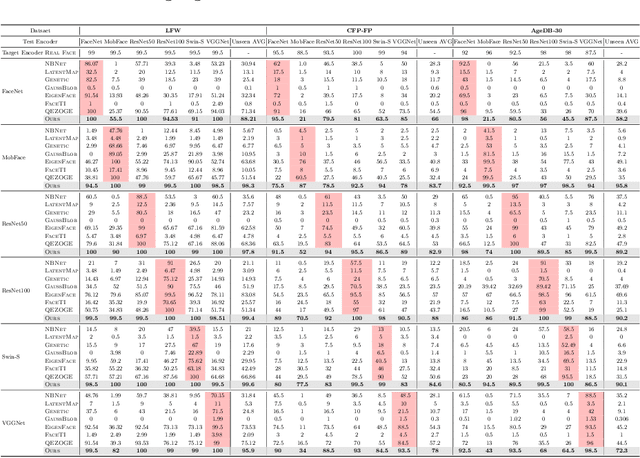
Abstract:Understanding the vulnerability of face recognition systems to malicious attacks is of critical importance. Previous works have focused on reconstructing face images that can penetrate a targeted verification system. Even in the white-box scenario, however, naively reconstructed images misrepresent the identity information, hence the attacks are easily neutralized once the face system is updated or changed. In this paper, we aim to reconstruct face images which are capable of transferring face attacks on unseen encoders. We term this problem as Face Reconstruction Transfer Attack (FRTA) and show that it can be formulated as an out-of-distribution (OOD) generalization problem. Inspired by its OOD nature, we propose to solve FRTA by Averaged Latent Search and Unsupervised Validation with pseudo target (ALSUV). To strengthen the reconstruction attack on OOD unseen encoders, ALSUV reconstructs the face by searching the latent of amortized generator StyleGAN2 through multiple latent optimization, latent optimization trajectory averaging, and unsupervised validation with a pseudo target. We demonstrate the efficacy and generalization of our method on widely used face datasets, accompanying it with extensive ablation studies and visually, qualitatively, and quantitatively analyses. The source code will be released.
Beyond First-Order: A Multi-Scale Approach to Finger Knuckle Print Biometrics
Jun 28, 2024Abstract:Recently, finger knuckle prints (FKPs) have gained attention due to their rich textural patterns, positioning them as a promising biometric for identity recognition. Prior FKP recognition methods predominantly leverage first-order feature descriptors, which capture intricate texture details but fail to account for structural information. Emerging research, however, indicates that second-order textures, which describe the curves and arcs of the textures, encompass this overlooked structural information. This paper introduces a novel FKP recognition approach, the Dual-Order Texture Competition Network (DOTCNet), designed to capture texture information in FKP images comprehensively. DOTCNet incorporates three dual-order texture competitive modules (DTCMs), each targeting textures at different scales. Each DTCM employs a learnable texture descriptor, specifically a learnable Gabor filter (LGF), to extract texture features. By leveraging LGFs, the network extracts first and second order textures to describe fine textures and structural features thoroughly. Furthermore, an attention mechanism enhances relevant features in the first-order features, thereby highlighting significant texture details. For second-order features, a competitive mechanism emphasizes structural information while reducing noise from higher-order features. Extensive experimental results reveal that DOTCNet significantly outperforms several standard algorithms on the publicly available PolyU-FKP dataset.
Scale-aware competition network for palmprint recognition
Nov 21, 2023Abstract:Palmprint biometrics garner heightened attention in palm-scanning payment and social security due to their distinctive attributes. However, prevailing methodologies singularly prioritize texture orientation, neglecting the significant texture scale dimension. We design an innovative network for concurrently extracting intra-scale and inter-scale features to redress this limitation. This paper proposes a scale-aware competitive network (SAC-Net), which includes the Inner-Scale Competition Module (ISCM) and the Across-Scale Competition Module (ASCM) to capture texture characteristics related to orientation and scale. ISCM efficiently integrates learnable Gabor filters and a self-attention mechanism to extract rich orientation data and discern textures with long-range discriminative properties. Subsequently, ASCM leverages a competitive strategy across various scales to effectively encapsulate the competitive texture scale elements. By synergizing ISCM and ASCM, our method adeptly characterizes palmprint features. Rigorous experimentation across three benchmark datasets unequivocally demonstrates our proposed approach's exceptional recognition performance and resilience relative to state-of-the-art alternatives.
Energizing Federated Learning via Filter-Aware Attention
Nov 18, 2023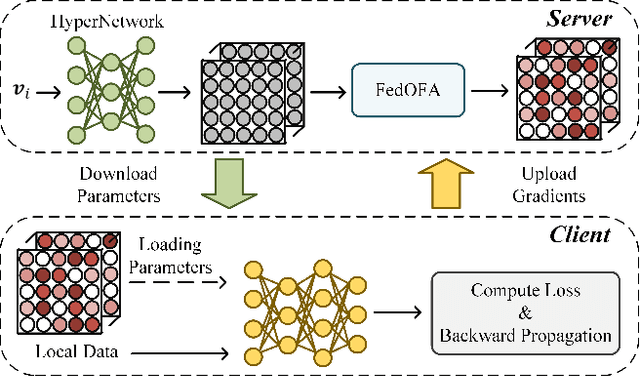
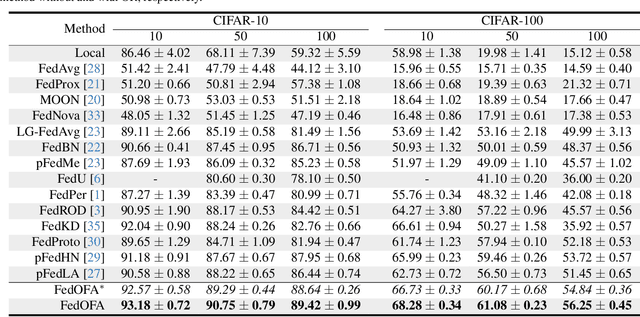

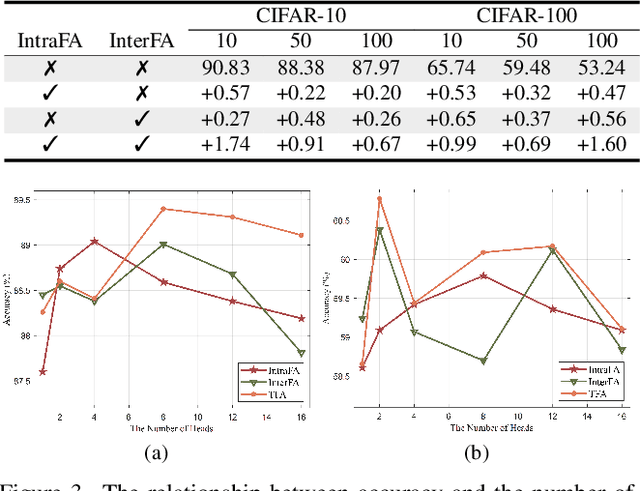
Abstract:Federated learning (FL) is a promising distributed paradigm, eliminating the need for data sharing but facing challenges from data heterogeneity. Personalized parameter generation through a hypernetwork proves effective, yet existing methods fail to personalize local model structures. This leads to redundant parameters struggling to adapt to diverse data distributions. To address these limitations, we propose FedOFA, utilizing personalized orthogonal filter attention for parameter recalibration. The core is the Two-stream Filter-aware Attention (TFA) module, meticulously designed to extract personalized filter-aware attention maps, incorporating Intra-Filter Attention (IntraFa) and Inter-Filter Attention (InterFA) streams. These streams enhance representation capability and explore optimal implicit structures for local models. Orthogonal regularization minimizes redundancy by averting inter-correlation between filters. Furthermore, we introduce an Attention-Guided Pruning Strategy (AGPS) for communication efficiency. AGPS selectively retains crucial neurons while masking redundant ones, reducing communication costs without performance sacrifice. Importantly, FedOFA operates on the server side, incurring no additional computational cost on the client, making it advantageous in communication-constrained scenarios. Extensive experiments validate superior performance over state-of-the-art approaches, with code availability upon paper acceptance.
Understanding the Feature Norm for Out-of-Distribution Detection
Oct 09, 2023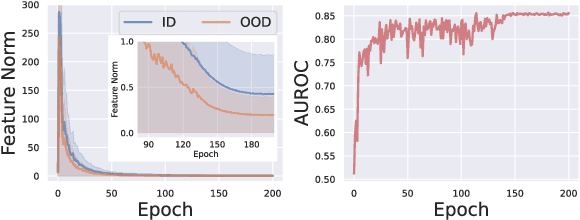

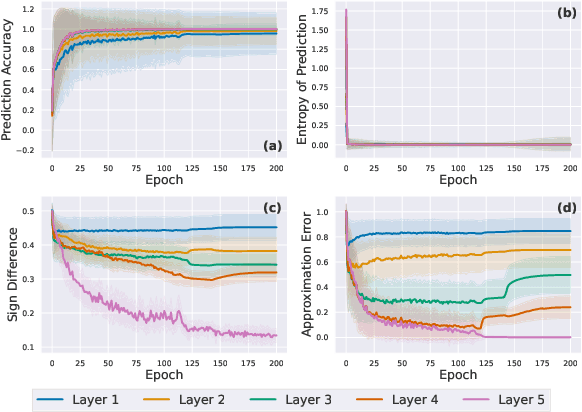
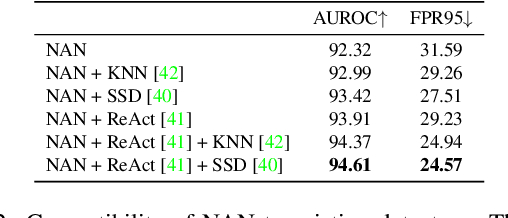
Abstract:A neural network trained on a classification dataset often exhibits a higher vector norm of hidden layer features for in-distribution (ID) samples, while producing relatively lower norm values on unseen instances from out-of-distribution (OOD). Despite this intriguing phenomenon being utilized in many applications, the underlying cause has not been thoroughly investigated. In this study, we demystify this very phenomenon by scrutinizing the discriminative structures concealed in the intermediate layers of a neural network. Our analysis leads to the following discoveries: (1) The feature norm is a confidence value of a classifier hidden in the network layer, specifically its maximum logit. Hence, the feature norm distinguishes OOD from ID in the same manner that a classifier confidence does. (2) The feature norm is class-agnostic, thus it can detect OOD samples across diverse discriminative models. (3) The conventional feature norm fails to capture the deactivation tendency of hidden layer neurons, which may lead to misidentification of ID samples as OOD instances. To resolve this drawback, we propose a novel negative-aware norm (NAN) that can capture both the activation and deactivation tendencies of hidden layer neurons. We conduct extensive experiments on NAN, demonstrating its efficacy and compatibility with existing OOD detectors, as well as its capability in label-free environments.
Nearest Neighbor Guidance for Out-of-Distribution Detection
Sep 26, 2023Abstract:Detecting out-of-distribution (OOD) samples are crucial for machine learning models deployed in open-world environments. Classifier-based scores are a standard approach for OOD detection due to their fine-grained detection capability. However, these scores often suffer from overconfidence issues, misclassifying OOD samples distant from the in-distribution region. To address this challenge, we propose a method called Nearest Neighbor Guidance (NNGuide) that guides the classifier-based score to respect the boundary geometry of the data manifold. NNGuide reduces the overconfidence of OOD samples while preserving the fine-grained capability of the classifier-based score. We conduct extensive experiments on ImageNet OOD detection benchmarks under diverse settings, including a scenario where the ID data undergoes natural distribution shift. Our results demonstrate that NNGuide provides a significant performance improvement on the base detection scores, achieving state-of-the-art results on both AUROC, FPR95, and AUPR metrics. The code is given at \url{https://github.com/roomo7time/nnguide}.
 Add to Chrome
Add to Chrome Add to Firefox
Add to Firefox Add to Edge
Add to Edge